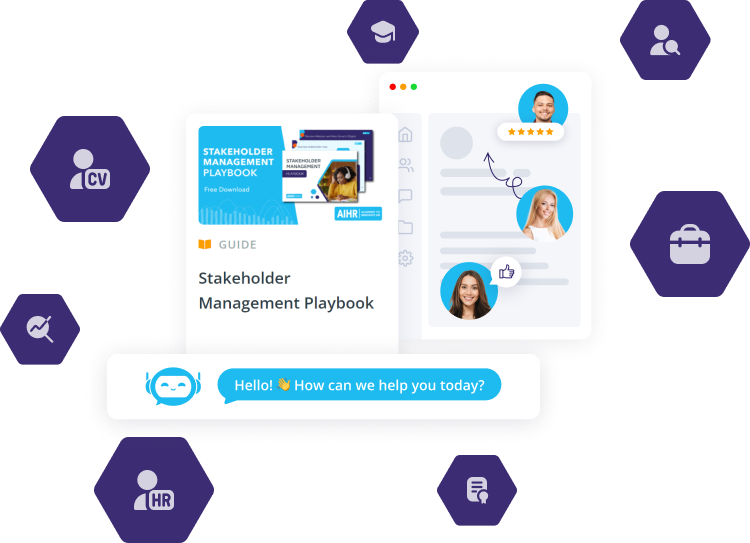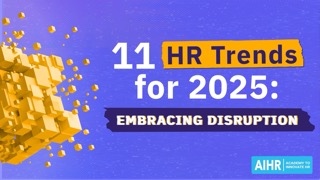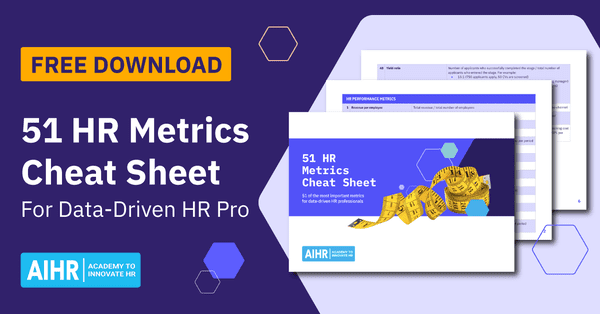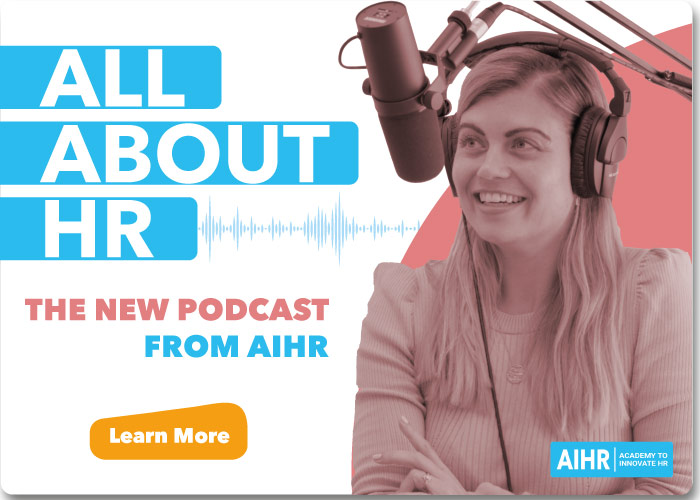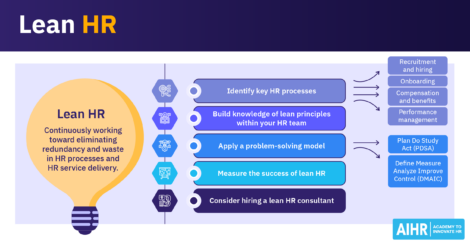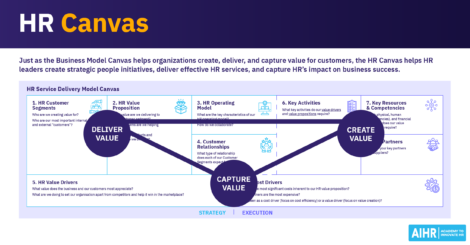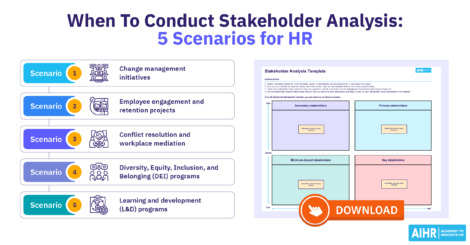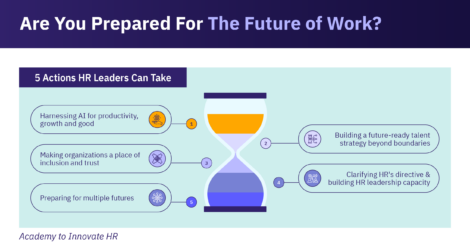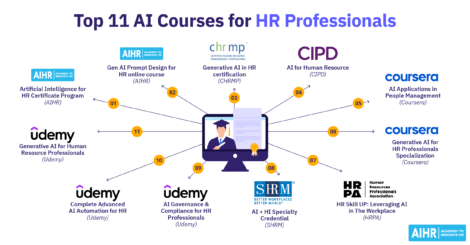[Free] SOAR Analysis Template and SOAR Matrix Guide
Organizations focusing on strength-based development see 9% to 15% increase in engaged employees. A SOAR analysis can contribute to this by helping HR tap into strengths, seize new opportunities, and build a high-performing workforce.

A SOAR analysis template is a handy tool for aligning HR strategies with business objectives. Using the template, you can identify strengths, assess opportunities, and define a clear vision for implementation.
This article explains the purpose and importance of a SOAR analysis and how to conduct it, as well as how you can turn data into actionable insights. It also provides a free customizable template to support and streamline your HR SOAR analysis.
Contents
What is a SOAR analysis?
Understanding the SOAR matrix
SOAR vs. SWOT: What are the differences?
When to use a SOAR analysis in HR
5 steps to use a SOAR analysis template
Free SOAR analysis template
SOAR example: employee wellbeing program
Best practices for using SOAR in HR strategic planning
What is a SOAR analysis?
A SOAR analysis is a strategic planning tool that helps organizations focus on strengths and growth opportunities. SOAR stands for Strengths, Opportunities, Aspirations, and Results.
This analysis method matches business strategy with core competencies and market potential, and provides a structured approach to aligning organizational vision and strategy with its core competencies and external opportunities.
The SOAR matrix explained
The SOAR matrix (also referred to as a SOAR framework) is a strengths-based strategic planning model that helps HR professionals align workforce initiatives with business objectives. Here’s how each component plays a role in shaping a high-performing organization:
- Strengths: What the organization does well, such as core skills, leadership, company culture, and workforce capabilities. HR can determine strengths to help boost engagement and development.
- Opportunities: External factors that benefit the organization, such as market trends, new technologies, or workforce shifts. You can leverage these to improve areas like recruitment, planning, and talent strategies.
- Aspirations: The organization’s vision and long-term goals. These can include becoming an employer of choice, enhancing workplace culture, or launching new engagement initiatives.
- Results: Measurable outcomes that track success, such as retention rates, engagement levels, and diversity benchmarks. Clear KPIs ensure accountability and progress tracking.
Applying the SOAR analytics model to the SOAR framework
The SOAR analytics model helps you expand on the SOAR framework with a structured method that you can use to assess your organization’s current state, and define its strategic direction. This helps you to then align workforce planning with business objectives, and ensure people strategies contribute to company growth.
The model involves leveraging internal strengths, exploring external opportunities, defining aspirations, and measuring results. As such, it helps you recognize and build on areas where the company excels, and identify new markets and innovations to improve business outcomes.
The SOAR model also allows you to establish a vision to foster career growth and long-term organizational success. You can also use it to help you implement data-driven decision-making, track the progress of your HR initiatives, and measure their impact on business performance.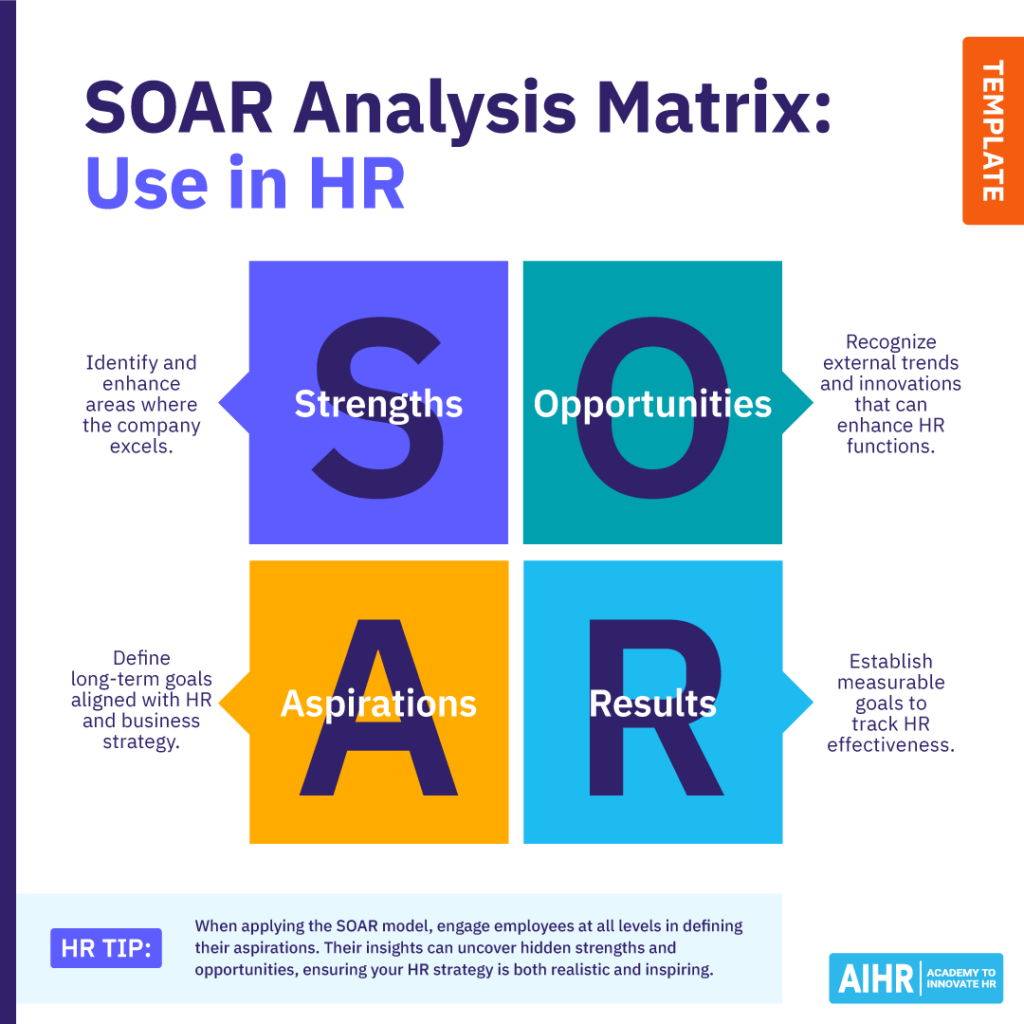
SOAR vs. SWOT: What are the differences?
Like the SOAR analysis, the SWOT analysis is a strategic planning tool. However, they serve different purposes in HR and business strategy. Here’s a comparison of their key differences:
What it includes
- Strengths
- Opportunities
- Aspirations
- Results
- Strengths
- Weaknesses
- Opportunities
- Threats
What it focuses on
Strength-based; focuses on current positives, goals, future opportunities, and results.
Balanced analysis considering both strengths and weaknesses, as well as external opportunities and threats.
The perspective
Aspirational and future-oriented, aiming to build on existing strengths.
Diagnostic and problem-solving, assessing both positive and negative factors.
The approach
Encourages growth, collaboration, and innovation.
Identifies risks and challenges while also exploring potential advantages.
How to use it
Aligns HR strategies with long-term vision and employee engagement.
Helps HR assess internal capabilities and external risks.
The strategic outcomes
Creates a roadmap for capitalizing on strengths and achieving long-term goals.
Develops strategies for mitigating risks and overcoming challenges.
When to use a SOAR analysis in HR
You can use a SOAR analysis in strategic areas to drive positive change and align HR goals with business priorities. Here are key scenarios for effective SOAR application:
- Employee engagement strategies: Focus on strengths (e.g., a supportive workplace culture) and opportunities (e.g., using new tools for employee feedback). Track success through retention rates and surveys.
- Change management: During transformations like mergers or tech rollouts, use SOAR to align changes with employee needs. For instance, if your company integrates new HR software, SOAR can guide seamless adoption.
- Diversity, Equity, Inclusion, and Belonging (DEIB) initiatives: SOAR can help identify current DEIB strengths and explore diverse hiring pipelines. Additionally, set leadership equity goals and track inclusion metrics.
- Leadership development and succession planning: Use SOAR to recognize leadership strengths, define mentorship opportunities, set growth goals, and measure the effectiveness of your company’s current succession plan.
- Employee learning and development (L&D): Use SOAR to identify training strengths, explore new skill-building opportunities, promote a learning culture, and track course completion rates and skill assessments.
- HR tech adoption and digital transformation: When implementing new tools, analyze digital adoption, assess automation benefits, define AI-driven goals, and measure HR efficiency improvements.
- Talent acquisition and employer branding: When trying to attract top talent, use SOAR to showcase company culture, improve employer branding, set industry recognition goals, and track hiring metrics.
A SOAR analysis can provide important insights before embarking on strategic projects. These insights help you understand how to use certain strengths, where potential stumbling blocks could be, and how to address them. At times, the real value lies in helping stakeholders understand what’s to come and involving their voices early in the process.

5 steps to use a SOAR analysis template
Below are five steps to follow to use a SOAR analysis template effectively, based on which questions you should ask and what you should do to answer those questions.
Step 1: Brainstorm strengths
Engage key stakeholders (i.e., senior leaders, managers, and employees) to identify HR’s internal strengths. This will highlight your organization’s employer brand and the areas where HR excels. You need to understand these strengths to build an effective HR strategy aligned with organizational goals.
Ask
- What makes the organization a great employer?
- Which of our HR initiatives work best?
Do
- Use surveys, focus groups, and exit interviews to uncover strengths
- Share insights with stakeholders.
Step 2: Identify opportunities
Explore external trends and changes that could benefit HR initiatives and workforce strategy. These can include industry shifts, technological advancements, or changes in workforce demographics.
Ask
- What industry trends or partnerships can help improve HR?
- Can any external collaborations strengthen our HR strategies?
Do
- Stay updated on trends and industry developments through HR events
- Use data analytics to predict workforce needs and share the insights with stakeholders.
Learn how to identify HR priority initiatives
Build your skills in identifying key priorities through analyzing the HR customer needs.
In AIHR’s HR Manager Certificate Program, you’ll learn how to conduct different types of analyses for organizational success (e.g., internal, stakeholder, and competitive advantage analysis), and how to engage and align stakeholders effectively.
Step 3: Define aspirations
Set a bold vision for HR’s future, ensuring alignment with organizational goals. Aspirations should be inspirational yet achievable, providing clear direction for HR initiatives.
Ask
- Where do we want HR to be in five years?
- How can we become leaders in employee experience and workplace culture?
Do
- Engage employees in vision-setting through feedback and discussions
- Encourage employee feedback through workshops or pulse surveys.
Step 4: Establish measurable results
Define specific, quantifiable outcomes to assess HR strategies’ effectiveness. Tie results to key performance indicators (KPIs) to track progress over time.
Ask
- What methods should we use to track success
- Which KPIs matter most in helping us achieve our goals?
Do
- Use HR dashboards and analytics software to track progress
- Schedule check-ins with leadership to discuss findings and adjust strategies.
Step 5: Create and implement the SOAR matrix
Organize the findings from each section into a SOAR matrix to create a structured action plan. The matrix will provide a roadmap for HR strategies and ensure alignment with broader business objectives.
Ask
- How can we use strengths to maximize opportunities?
- How do our aspirations align with external trends and internal capabilities?
Do
- Include actionable HR initiatives in your SOAR matrix and assign responsibilities
- Establish a timeline for execution and regularly review the matrix to refine strategies.
Free SOAR analysis template
To help you get started, AIHR has created a free, customizable template (PowerPoint and Word format) to guide you through each component of the SOAR framework and support your own SOAR analysis process.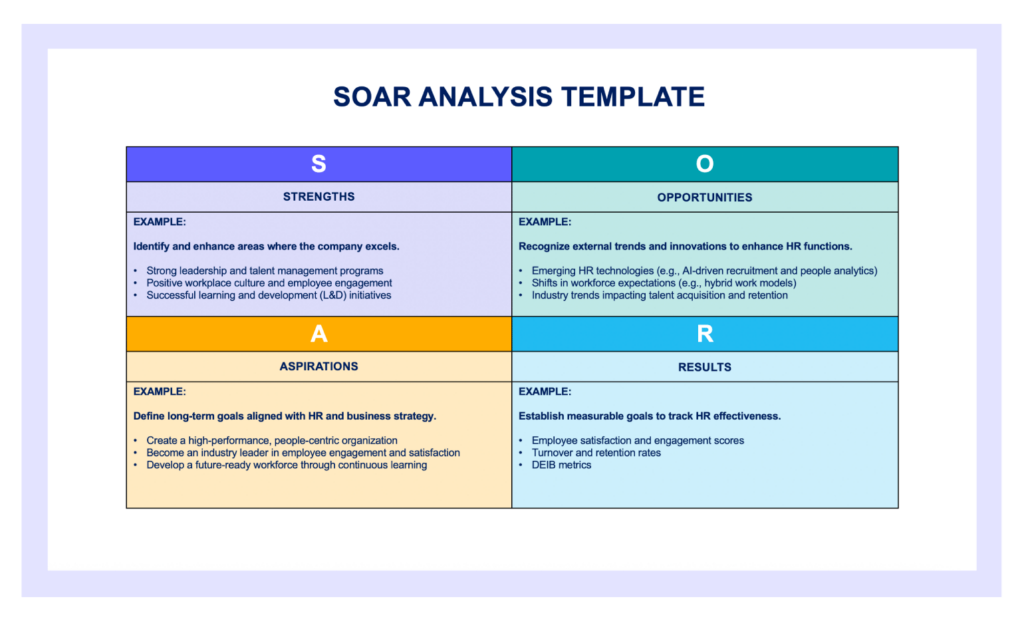
HR SOAR example: employee wellbeing program
The following scenario offers an example of SOAR in action. In this instance, the HR department is set to launch a new employee wellness program to improve staff health, satisfaction, and productivity.
- Existing health benefits and employee assistance programs (EAP) are highly utilized
- Leadership supports employee wellbeing initiatives
- Strong internal communication channels for promoting wellness programs that enjoy positive engagement.
- Expand mental health support through counseling services and mindfulness programs
- Introduce flexible work arrangements for better work-life balance
- Partner with wellness providers for discounts on gym memberships, nutrition plans, or wellness apps.
- Create a culture where employee wellbeing is part of daily operations, not just as an initiative
- Promote holistic employee wellness to attract top talent
- Improve employee morale and engagement through personalized wellbeing support
- Reduce workplace stress and improve job satisfaction to drive retention.
- 75% participation rate in wellness activities within six months
- 15% improvement in staff satisfaction scores on work-life balance
- 10% reduction in absenteeism due to stress-related illnesses in one year
- Positive feedback in employee surveys on the impact of the wellbeing program.
Best practices for using SOAR in HR strategic planning
The following best practices can help you apply the SOAR framework to support effective HR strategic planning:
Align HR goals with business strategy
Make sure your HR goals support the organization’s objectives—you can do so by collaborating with leadership. At the same time, integrate SOAR findings into workforce planning, talent development, and employee engagement strategies.
Engage stakeholders at all levels
It’s important to involve employees, managers, and executives to ensure sufficiently diverse perspectives that can inform your strategy. You can achieve this through workshops or surveys that help you gather insights on strengths, opportunities, and aspirations.
Use HR analytics to track progress
Use HR data tools and analytics to measure employee wellbeing, retention, satisfaction, and engagement KPIs. Be sure to review these results and metrics regularly to help you refine your strategies and ensure they align with broader organizational goals.
Prioritize high-impact aspirations for long-term success
Focus on goals that drive employee wellbeing and organizational success, as they can help ensure positive outcomes for the business and its workforce in the long term. Set clear, long-term visions for HR initiatives and create step-by-step action plans to carry out.
Support continuous improvement
Treat SOAR as a living document. This means you should update it regularly to reflect changes in workforce needs and business priorities. At the same time, encourage feedback loops to assess the effectiveness of your company’s HR initiatives.
Communicate the SOAR strategy effectively
Share findings and strategic plans with all employees to encourage transparency and engagement. You can also use storytelling to highlight success stories, as these will encourage greater participation in HR programs.
Leverage strengths to maximize opportunities
Identify HR’s strengths and build on them to create new programs as part of your organization’s HR strategic plan. At the same time, align existing initiatives with emerging trends in employee wellbeing, diversity, and leadership development.
Develop a results-oriented mindset
Set HR SMART goals (Specific, Measurable, Achievable, Relevant, Time-bound) for each HR initiative you plan. After this, regularly assess the progress of your strategies and adjust them based on the relevant data and feedback you gather.
Encourage leadership buy-in
Position HR as a strategic business partner by demonstrating how SOAR-driven HR initiatives contribute to business growth. Additionally, be sure to secure executive sponsorship for wellbeing and talent initiatives to obtain sustained support.
Build employee engagement and ownership
Empower employees to take an active role in HR initiatives by involving them in decision-making, and collecting their feedback (e.g., through surveys and focus groups). Create employee ambassador programs to champion wellbeing and DEIB efforts.
To sum up
A SOAR analysis helps HR teams align workforce initiatives with business goals using a strengths-based approach. Unlike SWOT, which examines weaknesses, SOAR focuses on identifying and using strengths and opportunities to drive success.
By applying SOAR, you can boost engagement, support change, and create inclusive workplaces while tracking measurable results. Whether for talent acquisition, leadership development, or well-being initiatives, SOAR can help build a future-focused strategy that drives business growth and employee satisfaction.
FAQ
1. Identify strengths: What your organization does well (e.g., leadership, engagement, HR programs).
2. Explore opportunities: External trends, market shifts, or technology that can enhance HR strategies.
3. Define aspirations: Set a bold vision aligned with business goals and employee needs.
4. Establish results: Set measurable outcomes like retention rates, engagement scores, or productivity benchmarks.
The SOAR format is typically presented in a matrix with four quadrants, each representing strengths, opportunities, aspirations, and results. This makes it easy to visualize how strengths and opportunities connect to aspirations and measurable outcomes. Organizations use this format to create strategic action plans that align HR efforts with business objectives.
The SOAR analytics model incorporates data-driven decision-making into HR strategies. It enhances SOAR by:
– Using workforce analytics to assess strengths
– Identifying opportunities with industry insights
– Defining aspirations through strategic forecasting
– Measuring results with KPIs.
Learn more
Related articles
Are you ready for the future of HR?
Learn modern and relevant HR skills, online

